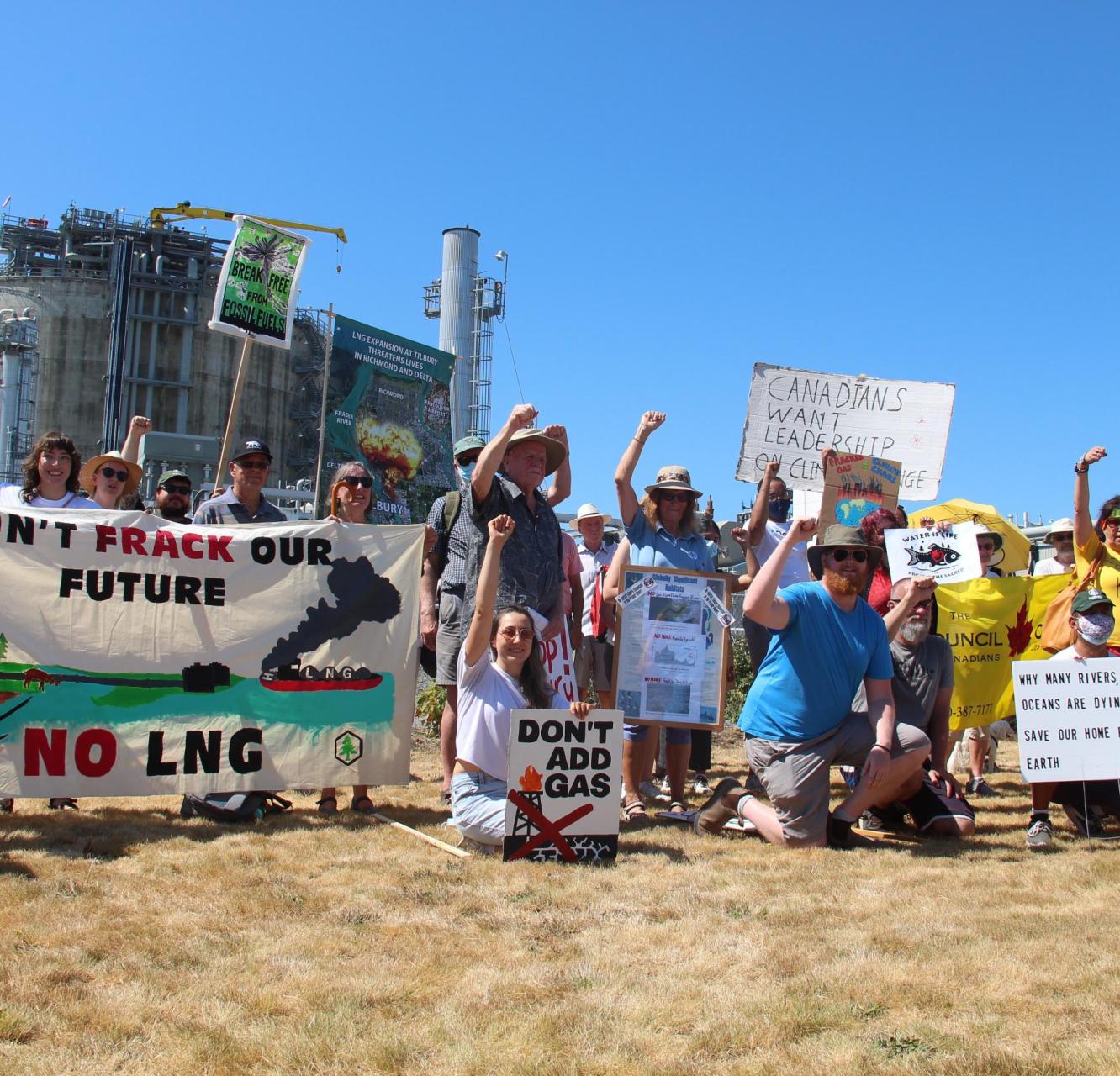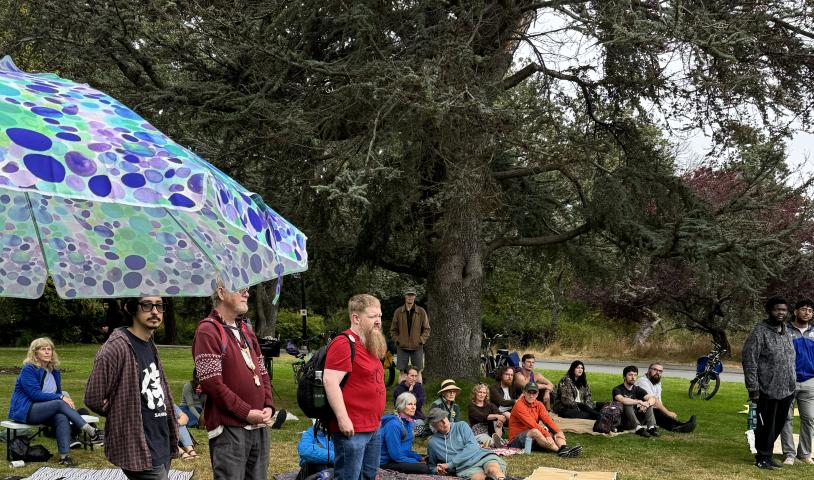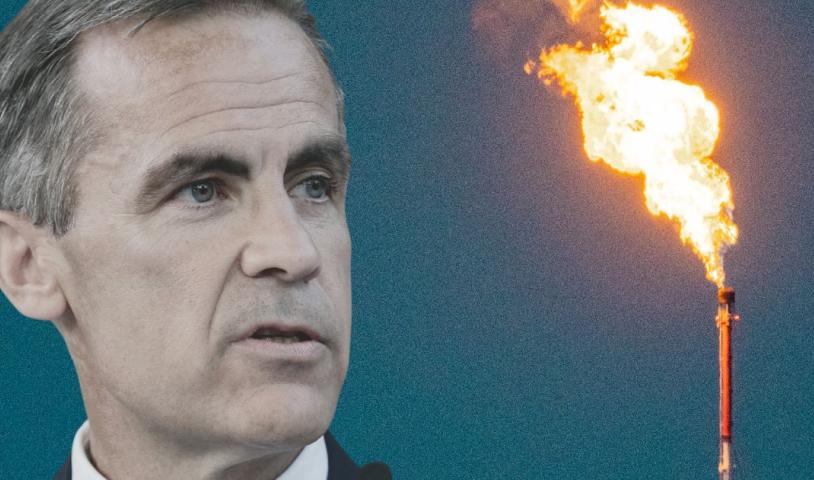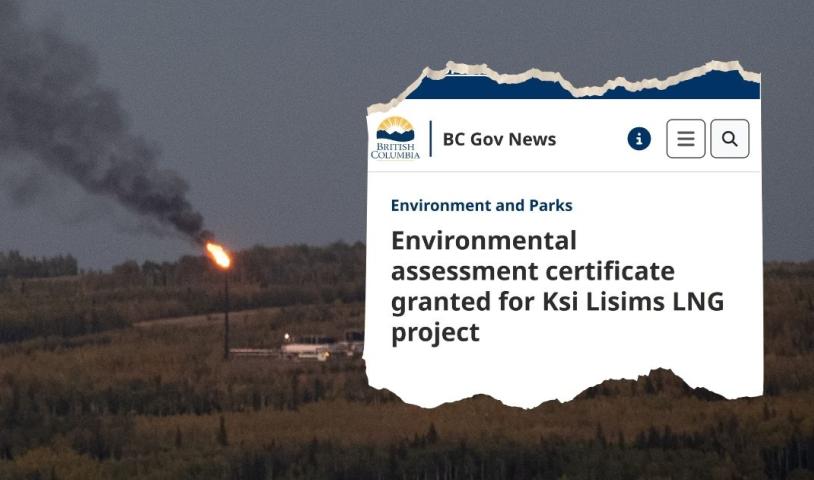BC Oil and Gas Commission abandons orphan wells
Thursday, May 15, 2014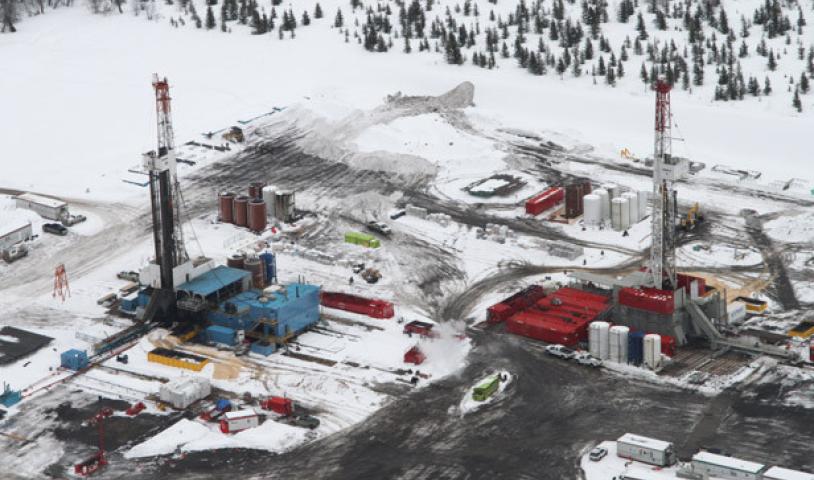
Despite admitting there is an increasing trend of inactive well sites awaiting reclamation, the BC Oil and Gas Commission has slashed its budget for its orphan site reclamation fund from $4.83 million in 2013 to just $1 million in 2014.
According to the Orphan Well Association, “an orphan is a well, pipeline, facility or associated site which has been investigated and confirmed as not having any legally responsible or financially able party to deal with its abandonment and reclamation.”
Earlier this year, the BC Ministry of Finance announced the 2014 Budget, focused on LNG development. According to the budget, the Liberals plan to spend $29 million over the next three years on LNG development alone. The National Energy Board also approved seven LNG export applications for BC, touted as the basis for a $100 billion Prosperity Fund that will wipe out the province’s debt by 2028.
In order to increase LNG development, the oil and gas industry will have to ramp up drilling, fracking and the number of LNG plants along the coast.
This push to expand LNG resources will create more orphan sites, but the government does not have the funds for reclamation because the Commission has scheduled to cut its cleanup expenditures. According to the BC Oil and Gas Commission’s 2014 Service Plan.
There is a trend of increasing inactive well sites awaiting reclamation as the industry matures. Delays in the implementation of restoration activities may increase the number of inactive sites and associated liabilities.
Gas production in the province
In the northern BC regions of the Liard and Horn River Basins, and Montney shale field, the production from a natural gas well typically declines by 61 to 80-percent in just three years, according to geoscientist, David Hughes’ research. By that point, the well is all but played out, requiring far more drilling to keep up with production demands.
With the limited lifespan of these wells and the demand the LNG industry will place on fracking in BC, Hughes estimates industry will need to drill a staggering 50,000 new wells by 2040 – twice the total number in the 60 year history of the province’s natural gas industry.
That means the number of wells left behind will sharply increase. For example, the Horn River Basin gas well has a depletion rate of 80-percent in the first three years.
With a budget of $1 million until 2017, the BC Oil and Gas Commission will be unable to keep up with the demand for new sites as industry continues drilling, unable to account for the vast number of well pads reaching orphan stage, leaving more orphan well sites than they are able to responsibly reclaim.
Government and industry are driving a massive experiment in fracking and LNG development without being sure of the consequences for this scale of development.
For instance, in October the BC Ministry of Environment funded the $650,000 Kitimat Airshed Impact Assessment Project to measure the cumulative effects of existing and proposed industrial air emissions in the Kitimat Valley airshed. The SkeenaWild Conservation Trust accessed this research in their November 2013 “Air Advisory” report, concluding, “this research is being carried out under tight timelines and with a limited budget… raises concerns about whether current research can provide a comprehensive understanding of potential impacts on which to base sound decisions.”
The Kitimat airshed blockage from the current Rio Tinto Alcan aluminum smelter plant’s carbon dioxide emissions has demonstrated the link between human health problems and industrial air emissions in the area.
“It’s a new era and it needs to be spoken about differently than any other time you’ve done gas before,” says Eoin Madden, climate campaigner with the Wilderness Committee.
I had one call from Fort Nelson First Nation which described it as carpet-bombing. It’s taking wilderness and carpet-bombing it like you would have seen back in Vietnam. It’s that destructive.
The concern is that shale gas and LNG are a very different animal from the historical conventional industry with which the province is so familiar.
“When folks hear LNG they don’t realize the danger and that we’re talking about a completely different product from what we’ve traditionally had in BC,” says Madden. “It’s the product that forces us to swap our fresh water for gas and it’s the product that forces us to industrialize enormous amounts of wilderness.”
The unknown consequences of orphan sites
Hydrologist, Dr. Gilles Wendling, presented the unknowns about groundwater in the Yukon in January to the Yukon legislative committee.
“We are extremely ignorant about groundwater,” said Wendling.
We don’t know where our aquifers are. Even shallow aquifers, we don’t know where they are, we don’t know how big they are, we don’t know how deep they are. We don’t know the water table elevation, we don’t even know in which direction the groundwater moves, we don’t know, we haven’t collected the information.
The unknown dangers with old well sites come from the toxic water reserves created during hydraulic fracturing. Not all old well sites become orphan wells. The majority of them are injected with fracking fluid flowback that’s been mixed with toxic additives, such as ethylene glycol, methanol, hydrochloric acid, formaldehyde, mercury, uranium, and lead. The toxic flowback is then injected deep underground into old oil wells that haven’t become orphan sites. These types of wells that use this technique of deep oilfield injection are known as disposal wells. Disposal wells are old wells which use the drilling hole to dispose the leftover fluid from hydraulic fracking. These disposal wells are then sealed with concrete to prevent open exposure.
But wastewater-injected wells contain structural risks says Wendling. Active wells, disposal wells and orphan wells are all subject to native conditions, such as mini earthquakes, that create micro-fractures in the cement seals and corrosion in the casing of the well hole where leaks can happen a year to a decade as the structural integrity of the well degrades.
Well integrity is how wells are sealed and how a well’s sealing capacity will be modified with time.
“Once a hole is drilled in the ground, this hole is drilled forever,” says Wendling.
This hole goes through various zones which are under different pressures and which contain different types of fluids like gases, or liquids or a mix of the two. Once you have a hole that reaches through various zones and it’s properly sealed then it doesn’t act as a pathway, but with time and depending on induced anomalies, like mini-earthquakes, that cause fracturation – how is this going to effect the integrity of the well, how is it going to create micro-fractures along the well, how is it going to crack the cement seal along the well after one year, five years, ten years, 100 years, how is this going to change with time?
If these disposal wells leak after deep oilfield injection, there is potential for our groundwater sources, that feed lakes and rivers, to become contaminated by these hydraulic fracturing chemicals because they can undergo pressure changes in the injection site that acts like a pathway for the mixing of deep and shallow water systems once the well’s integrity is jeopardized. There is a lot of research being conducted right now to grasp the risks associated with creating and connecting non-native pathways underground through drilling, but there are still a lot of unanswered questions about the dangers of disposal wells and orphan well sites, says Wendling.
Boom and bust economy
Hardy Friedrich, manager of communications for the Oil and Gas Commission in Fort St. John was given the opportunity to comment on the Commission’s plan for orphan well site reclamation but declined to comment in a phone interview.
“We shouldn’t get dragged into conversations about how much money should be spent reclaiming well sites,” says Madden. “Should the BC government spend money on that, or should Encana, or Talisman, or Apache, whoever made the mess? The way we’re thinking about it is endemic of how much ownership over our politics the oil and gas industry has.”
According to Madden, the dependence on the public to clean up after the energy industry reflects a fundamental problem in Canada’s fossil fuel economy.
The rules should state if you open a gas well, you’re responsible for remediation.
However, that is not the case in BC. Taxpayer money is budgeted by the BC Oil and Gas Commission to reclaim orphan well sites so oil companies can move onto the next drilling project, but this allotted budget for environmental remediation is not enough to keep up with the demand for oil and gas.
In June 2013, Natural Resources Canada mandated that pipeline companies have at least $1 billion of cleanup funds available to deal with incidents. If the government of Canada is willing to make the polluter pay in the event of a pipeline spill, why doesn’t the government hold oil companies accountable for reclaiming their old well sites as well?
Alternative forms of energy for a sustainable economy and jobs
“The infrastructure I would advocate for right now is an infrastructure that shifts how we think about energy and how we create energy jobs,” says Madden.
You’ve got geothermal potential, wind, solar power, different ways you can make energy. The question mark is over whether we should even have an export energy market?
With the current plan for LNG development there is not enough money in the budget to responsibly account for the necessary cleanup associated with LNG and shale gas development. Without this in place, the BC government risks running their fresh water supplies into the ground, along with their ability to deal with climate change.
“If you’re responsible on the environment, you’re going to create more jobs, that’s the truth,” says Madden.
According to Madden and other critics of LNG development, the government risks alienating public support for its LNG vision if it passes the buck for industry cleanup to taxpayers.
Photo: Fracking Operations in BC's Montney Shale. Damien Gillis.
